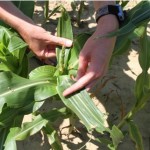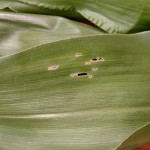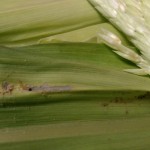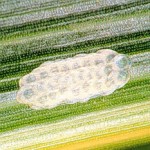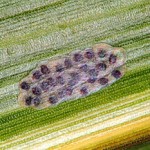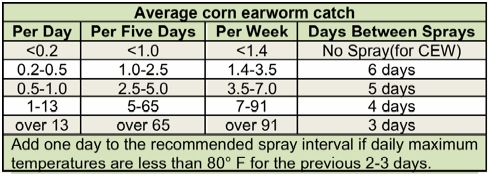Thirteen of the 32 monitoring sites submitted reports this week. The European corn borer E strain (ECB-E) was caught at one site, while the Z strain (ECB-Z) was found at six sites. The ECB hybrid was also detected at one site. Corn earworm (CEW) was reported at five sites. No fall armyworm (FAW) were caught this week. Western bean cutworm (WBC) was not detected at any site, aside from an early-season capture at Tivoli.
For fields that are in early tassel emergence, scout for any signs of eggs, larvae and feeding damage in the emerging tassel. Separate the leaves and look down into the tassel for any signs of feeding, frass or larvae. The treatment threshold at tassel emergence is 15% infested plants. ECB egg masses are usually located on the underside of the leaf along the midrib. The egg mass consists of 10-35 flattened eggs that overlap like fish scales. Eggs take approximately 100 base 50 degree days to hatch. Egg masses will change from white to cream to black as they age. When they appear black they are in the “black head” stage and will most likely hatch with 24 hours (see photo).
- Scouting tassel emergence sweet corn
- ECB feeding damage within whorl
- ECB larva inside whorl next to tassel
- ECB egg mass – white in color (photo University of Nebraska).
- ECB egg mass “black head” stage (photo University of Nebraska).
If the map is not visible and you are using Firefox as your browser, be sure to turn off enhanced tracking by going to the blue shield icon to the left of the URL address bar.

